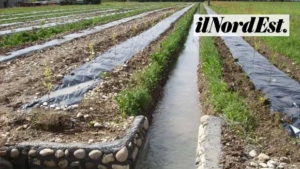
Water supplies are increasingly scarce, in Veneto a quarter of the outcrops have disappeared: collection interventions through natural infiltrations are taking shape.
Cultivating water is the last resort in resisting climate change . And it can also be a good deal for those who decide to dedicate their land to this “crop”. Although the frequent rainfall of the last year has replenished the springs and watercourses of the Veneto , the structural problem of the impoverishment of aquifers is far from being solved, which according to scholars have lost twenty percent of their volume in the last fifty years, while all our rivers have reduced their flow.
At a national level, an Ispra study has shown that compared to the beginning of the last century , the availability of water in Italy has already decreased by a fifth , a percentage that is destined to double in the coming years, making our country the one with the highest level of risk of water stress in Europe. This will also be addressed by World Water Day, scheduled for Sunday, and the Staranzano Festival (Go), between May 22 and 25.
[…]
“ Svolta blu ”, the latest addition to the Life projects for the implementation of these techniques and the activation of a network of public bodies and private entities for their management, was launched in October and can count on funding of 2 million euros: it includes Viacqua , the Fondazione Palazzo Festari IPA Alto Vicentino , 35 municipalities and mountain unions , economic categories, the Consorzio di Bonifica Alta pianura Veneta , the ANBI , the University of Padua and the CSQA certification body: the presence of the CQSA and of Professor Mara Thiene of Tesaf UniPd, an expert in water cost assessment, is preparatory to a particularly innovative development of this initiative, that is, the development of a system of “ blue credits ” to finance the operation and also make it economically interesting.
The mechanism would be the same as carbon credits, designed to offset CO2 emissions: once their value has been determined, they will be put on the market and can be purchased by companies with high water consumption, which will indirectly finance the construction of drinking wells or infiltration areas, eliminating or reducing their water footprint.
[…]
Source: ilNordEst.it